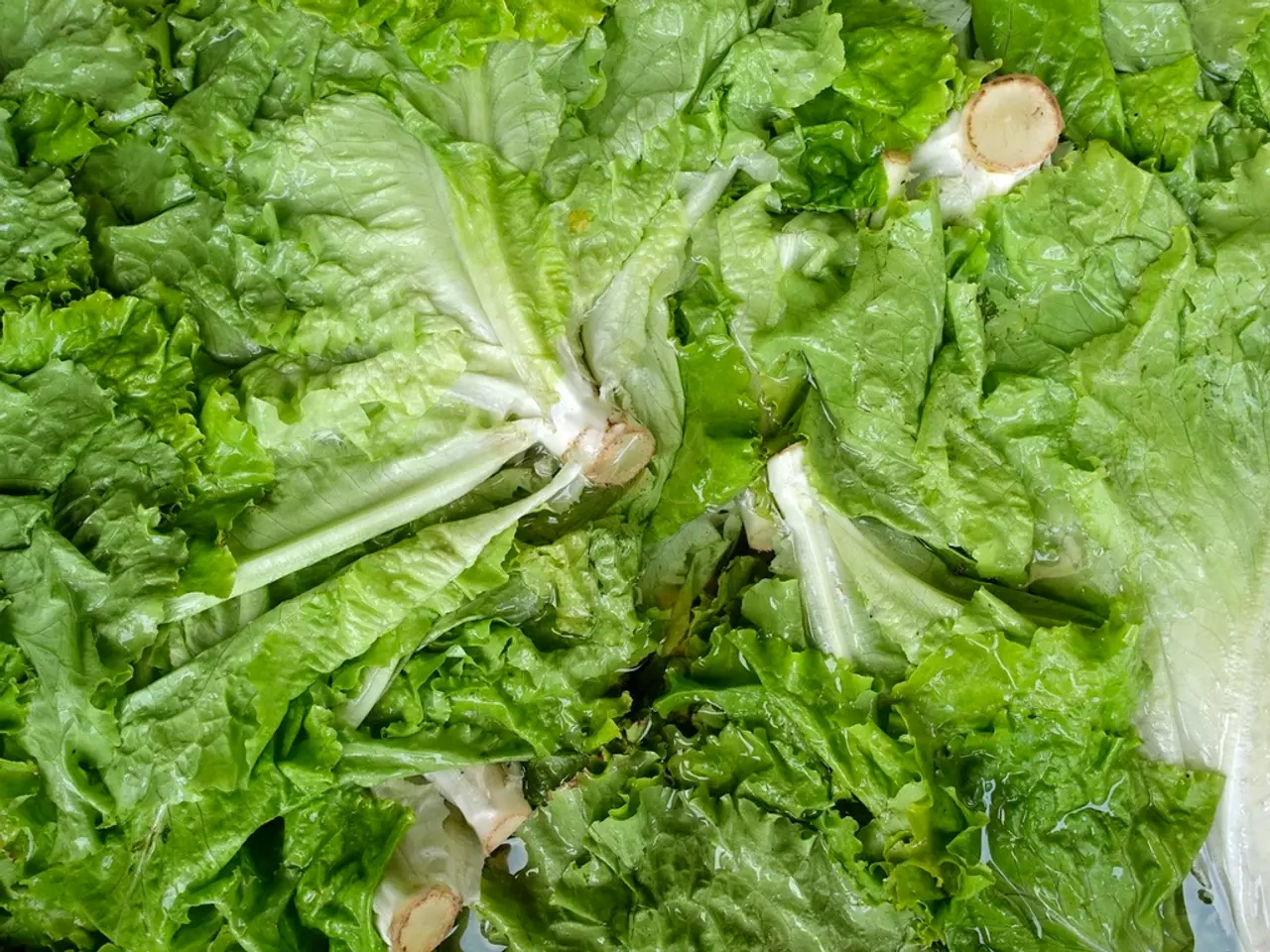Year-Round Indoor Lettuce Cultivation Guide
In the world of gardening, few plants are as versatile and popular as lettuce. This leafy green is a staple in various dishes, from salads and soups to wraps and sandwiches. But did you know that with the right care and planning, you can enjoy fresh lettuce all year round?
Adriana Copaceanu, a nature lover, gardener, and author of books on growing lavender and raising chickens, shares some valuable insights on how to achieve year-round lettuce growth.
Succession Sowing for Continuous Harvest
The key to year-round lettuce growth is succession sowing - planting small batches of lettuce seeds at regular intervals. This practice ensures a continuous supply of fresh lettuce. For example, loose-leaf varieties that mature in about 40 days can be sown every 7-10 days. Adjust the intervals shorter in warmer months (about every 5-6 days) and longer in cooler seasons (up to every 14 days) to maintain a steady harvest.
Soil and Planting
For the best results, select loose, rich, well-draining soil with good moisture retention and nutrient content. Improve the soil by mixing in about 2 inches of screened compost and 0.5 inches of worm castings, then loosen the soil to an 8-inch depth. Raised beds are ideal as they warm earlier and drain well, avoiding seedling rot.
When it comes to spacing, larger head lettuces should be planted 10 to 12 inches apart, while baby leaf varieties can be planted 6 to 8 inches apart.
Caring for Your Lettuce
Maintain consistent soil moisture (1-2 inches of water per week) and temperature between 40°F and 70°F (4°C and 21°C). Planting in a shady area can help prevent bolting, especially during hot periods. During summer, water well and plant out later in the day to minimise water loss during transplanting.
Lettuce is unfussy about the soil it grows in, and nutrients from nearby crops can suffice. However, supplementing the soil with organic matter is beneficial for nutrients and drainage.
Dealing with Common Pests and Problems
Aphids can be a problem for lettuce, but they can be easily dealt with using a soap and water mix. Using slug pellets is not recommended due to unknown effects on the environment and potential danger to pets. Planting okra with lettuce can help keep parasites at bay.
When it comes to harvesting, you can pick leaves as needed or pull out the whole head for larger salads. Soaking freshly picked lettuce in salted water for a few minutes can help remove unwanted bugs.
Building a small greenhouse can provide lettuce in the late fall and winter. Remember, with the right care and planning, you can enjoy fresh, home-grown lettuce all year round. Happy gardening!
[1] Growing Lettuce: A Guide to Year-Round Success [2] The Best Soil for Lettuce: A Comprehensive Guide [3] Succession Sowing: A Technique for Year-Round Vegetable Growth [4] Lettuce Planting Guide: Everything You Need to Know
- Adriana Copaceanu, an author, recommends succession sowing for growing lettuce all year round, by planting small batches of seeds at regular intervals to ensure a continuous supply of fresh lettuce.
- For the best results, select loose, rich, well-draining soil with good moisture retention and nutrient content, and improve it by mixing in compost and worm castings before loosening the soil.
- Larger head lettuces should be planted 10 to 12 inches apart, while baby leaf varieties can be planted 6 to 8 inches apart, primarily in raised beds that warm earlier and drain well.
- Maintain consistent soil moisture and temperature between 40°F and 70°F, and consider planting in a shaded area to prevent bolting during hot periods.
- Aphids can be a problem for lettuce, but can be controlled with a soap and water mix, while slug pellets are not recommended due to environmental concerns.
- Soaking freshly picked lettuce in salted water for a few minutes can help remove insects, and building a small greenhouse can provide lettuce in the late fall and winter, elevating organic lifestyle and home-and-garden gardening.





